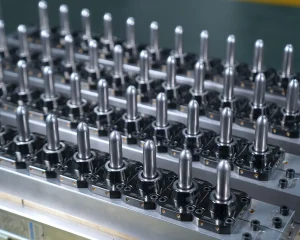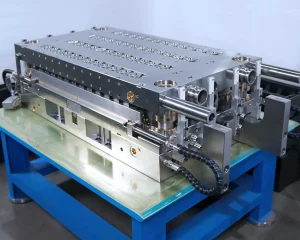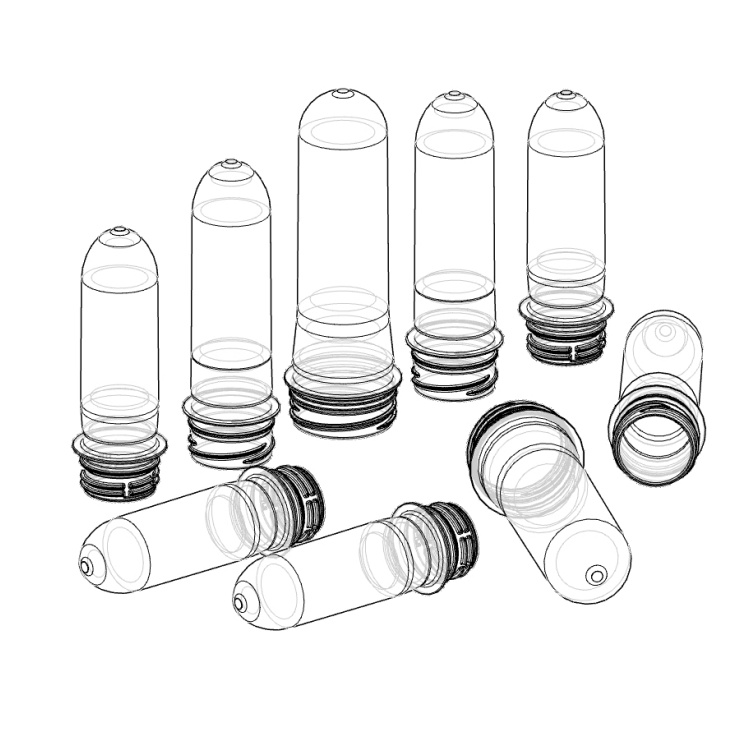Why Choose PET Injection Mold for Complex Part Production
PET injection molding is super awesome for making precise, fast, and flexible parts. It’s perfect for cool stuff like packaging and consumer goods. This guide will show you why PET molding rocks for making tricky parts, thanks to its strength, clear look, and recyclability. Let’s jump in and see what makes it so great!

What Makes PET an Ideal Material for Injection Molding?
What Are the Cool Things About PET for Molding?
Polyethylene Terephthalate (PET) is a big favorite for injection molding because it’s got some wicked properties. It’s super strong but not heavy, stays the right shape, and doesn’t break easily. Plus, it’s tough against water and bumps. That makes it awesome for things like food containers, drink bottles, and everyday products.
How Does the PET Injection Molding Process Work?
In injection molding, melted PET gets pushed into a mold. You gotta control stuff like pressure and speed to avoid mistakes. After it cools down, the mold opens, and out pops the PET product. This way, you can make tons of parts super fast and keep them all looking great.
How Does It Stack Up Against Other Plastic Molding Tricks?
Compared to stuff like blow molding or thermoforming, injection molding gives you tighter fits and super steady results. Blow molding is great for hollow things like bottles, but injection molding is the champ for making complicated shapes with tiny details.
How Is Precision Kept in Complex Part Making?
Why Is Getting the Size Right So Important?
When you’re making parts that need to fit together perfectly—like bottle caps or preforms—size accuracy is a must. Injection molding keeps things super tight with smart mold designs and steady work conditions.
Even though it sounds simple, PET injection molding is pretty tricky. But understanding it makes it easier to use in real life. This trickiness lets makers hit super tiny size targets every time.
How Does Repeatability Help Big Production Runs?
In huge production setups, like for drink bottles or makeup containers, repeatability makes sure every part works right without needing extra checks or fixes. Using tough steel molds that last a long time helps keep things consistent.
Take the 48 Cavities PET Preform Mold for Husky Injection Machine, for example. It’s built with S136 steel, treated to HRC30–35 hardness. That’s a lot of perfect parts!
What’s the Deal with Fancy Tooling for Better Precision?
Good tools make a huge difference in getting parts just right. Multi-cavity molds need to be super exact, so every cavity makes the same part. This takes not just fancy cutting machines but also careful heat balancing in the mold base.
You can count on pros like BJY, who make custom tools that fit your exact needs, like special neck finishes or preform weights. Their work keeps things accurate and lasts a long time.
Can You Make Complicated Shapes with This Process?
How Do Molds Handle Thin Walls or Tricky Bits?
PET flows really well when it’s hot, so it’s great for making thin-walled parts that stay strong. The secret is keeping walls the same thickness and putting gates in the right spots on the mold.
Can You Add Lots of Features in One Go?
Yes! PET injection molding can pack tons of features—like threads, snap-fits, or ribs—into one part without extra steps. This saves time and makes products tougher.
Smart molds can have moving parts or collapsible cores to make complex shapes, like undercuts or internal threads, all in one quick cycle.
What Should You Look for in Custom Mold Design?
If your project needs unique shapes or special finishes, custom molds are the way to go. Find partners who can do it all: from drawing designs on a computer to cutting the mold and testing it.
A trusted company like BJY, with over 20 years of know-how, makes custom molds that meet tough industry rules, like the 48-cavity preform mold for perfect results.

How Important Is Surface Finish When Using PET?
How Do You Get Shiny Surfaces and Clear Looks?
PET can look super clear if you process it right, but the finish depends on how polished the mold is and how fast it cools. Super shiny mold cavities make parts that sparkle and don’t look cloudy.
Why Does a Nice Surface Matter in Packaging?
In stuff like makeup or drink bottles, how a product looks on the shelf is a big deal. A shiny finish says “clean” and “fancy,” while clear PET lets people see what’s inside. That’s a huge win for top-notch products.
What Tricks Keep Finishes Looking Great Every Time?
Fancy tricks like diamond polishing or chemical texturing make sure every part looks the same, even after tons of runs. These treatments also keep mold surfaces from wearing out, so you get great quality for a long time.
What Makes PET So Strong and Awesome?
How Do Strength and Toughness Help Products?
PET is super strong and stiff, which is great for parts that need to hold up under pressure. It doesn’t break easily, even if it gets banged around during shipping or on store shelves.
This toughness means fewer broken products, less returns, and happier customers—super important when you’re making stuff for the whole world.
Where Do Barrier Properties Make a Difference?
PET is awesome at keeping out water and gases like oxygen or carbon dioxide. This helps keep drinks tasting fresh or makes food last longer in PET containers.
It’s great for things that need to stay sealed tight without extra layers, which makes production easier and keeps things safe.
How Can You Tweak Settings to Make PET Parts Better?
Getting the melt temperature, pressure, and speed just right cuts down on stress in the parts. It also makes them clearer and stronger. Pros know how to make tiny changes that give big results without costing extra.
Is It Cheap Enough for Huge Production Jobs?
How Does Using Less Material Save Money?
Injection molding cuts waste with systems that reuse extra material, like runners, back into production. Smart gates make sure only the right amount of PET goes into each cavity, so you don’t get messy extra bits.
This lean way saves raw materials and fits with eco-friendly rules that more people want these days.
How Do Fast Cycles Lower Costs?
Quicker cycles mean more parts made per hour, which gets your money back faster. Cool cooling systems in the mold help parts harden quick without messing up quality. It’s a tricky balance, but great engineering makes it work.
Fancy machines keep every shot the same and cut downtime from worn-out tools—a big deal when you’re making millions of parts a year.
Why Is Tough Tooling Important for Saving Cash?
Molds cost a lot upfront, but ones made with strong stuff like S136 steel (like in the 48 Cavities PET Preform Mold for Husky Injection Machine, HRC30–35 hardness). That long life means cheaper parts over time, even with some maintenance.
Can This Fit with Your Eco-Friendly Goals?
Is PET Really Recyclable on a Big Scale?
You bet! PET is way better than stuff like PVC or polystyrene. Used PET can be turned into new preforms with hardly any quality loss if it’s collected clean.
This recyclability makes a loop where waste turns back into new products—a key part of eco-friendly plans that are getting super popular.
How Energy-Saving Is Modern Injection Molding Gear?
New electric machines use way less power than old hydraulic ones. They’ve got smart motors that only use what’s needed for each cycle, not the max power all the time.
With good insulation around heaters, these upgrades cut down your carbon footprint without slowing down production.
Who’s Doing Awesome Eco-Friendly Stuff in Molding?
If you want a partner who’s great at both performance and green practices, check out Foshan Baijinyi Precise Technology Co., Ltd. (BJY). With over 20 years making high-performance molds—including fixing them up—they mix top-notch skills with eco-friendly ways for today’s supply chains.
FAQ
Q1: Can I use one PET injection mold design across different machines?
A: Not always. The mold has to match the machine’s size, clamping force, and nozzle type. But some designs have swappable inserts that work on platforms like Husky systems.
Q2: What maintenance schedule should I follow for long-lasting molds?
A: Clean the mold after every shift. Check it every 100,000 cycles for wear. Lubricate based on the resin type, since drying agents can make things wear faster.
Q3: Are there limits on how thin I can go with wall sections using PET?
A: Yes, but with smart tools, you can go as thin as 0.5 mm if the flow is perfect. It depends on gate placement and balanced runner designs.



